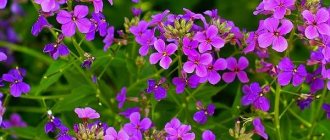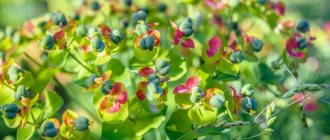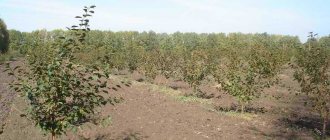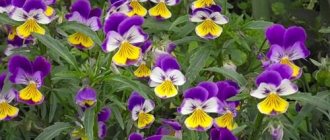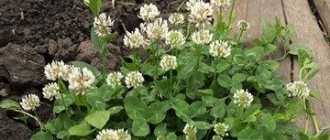Vegetarian flower - description
In nature, the noctule can be seen in the Mediterranean, Central Europe and Central Asia, Siberia and the Central regions of Russia. The plant was known back in Ancient Greece; it came to Russia in the 19th century and immediately became widespread; it was planted in almost every estate. Later it turned out that the noctule has a number of medicinal properties, and it began to be actively used in folk medicine.
Perennial or biennial herbaceous plant, noctule, also called night violet, or hesperis
Straight branched shoots of the noctule plant reach a height of 0.5-1.5 m. The shoots are covered with bright green alternately arranged lanceolate-shaped leaves with a jagged edge. Leaves and shoots are pubescent. The core root system lies close to the soil surface.
The flowers of the noctule are small, pink, lilac or purple. The flowers are united in loose racemes. Evening plant is very similar in appearance to phlox. There is one difference - the noctule flower has 4 petals, and the phlox has 5.
Flowering begins in the second season of the plant's life and lasts from May to August. Gradually, starting in June, the fruits ripen. The seeds of the noctule ripen in cylindrical pods with faintly visible edges.
general characteristics
Matrona's evening violet, also known as night violet or Matrona's hesperis (Hesperis matronalis) belongs to the Brassica family. Despite the fact that in appearance these flowers do not look as regal as roses, dahlias or lilies, their extraordinary tenderness, simplicity and magical aroma make this flower somehow familiar, simple and natural.
Not a single garden plot or flower bed in our area is complete without these lovely flowers. And in flower arrangements, this plant retains its fresh appearance for a long time and favorably emphasizes the beauty of the bouquet.
Usually Matrona's Evening is a perennial or biennial flower. Is popular and widely known. Sometimes called by this name - “bull phlox” because of the external similarity of these two garden plants. By the second half of August and until September, this decorative flower grows widely and stretches to about 1 meter.
In the 16th century, Matrona's Vechernitsa appeared in Europe, gained fame, and in the 18th century it forever became a favorite of Russian gardens, estates and parks. The homeland of the plant is considered to be the Eastern Mediterranean and Central Asia.
- Matrona has a slightly pubescent, strong stem that branches upward.
- The leaves have a rich, bright green color, narrow in diameter - only 3 cm, but long (more than 10 cm) and pointed at the top of the leaf. They are oval and lanceolate in shape and also have slight pubescence. They grow thickly.
- In the upper part of the stem, on high peduncles, there are inflorescences that are similar in color and structure to the branches of common lilac. The sepals are straight in shape and sac-shaped at the base.
- The petals are white, lilac, and shades of pink. The flower is about 2 cm in diameter and has 4 petals, which are arranged crosswise. The ovary of Hesperis is sessile, the column with petals is short in size. The stigma is bilobed in shape.
- The night violet also has fruits - pods of linear shape, slightly flattened, tetrahedral.
In total, there are more than 50 species of Matrona Vechernitsa, and in the central European part of Russia, mainly only 11 are found, here are some of them:
- Vespers are two-edged.
- Armenian.
- Persian Vespers.
- Evening violet.
- Steven's party.
- Gloomy.
- Lesnaya.
Terry varieties (purpurea plena), which have pinkish-red fluffy double inflorescences, have also been bred. But it should not be confused with Matthiola bicornuum. It is also mistakenly called night violet by some gardeners, but these are completely different plants.
The bush begins to bloom at the end of spring and lasts up to one and a half months. Although in hot, dry summers with little precipitation, hesperis fades faster.
Matrona's nocturnal plant reproduces using brown seeds that have excellent germination. They can be used for planting for about two years.
Medicinal properties and harm
Traditional healers have long used the medicinal properties of this plant. Various preparations with noctule can boost immunity, cope with pathogenic bacteria, strengthen the body, and remove excess fluid.
There are no contraindications for the use of this plant. But before treatment you should consult a doctor. People with allergic reactions, in childhood, during pregnancy and lactation should not use drugs with noctule.
Vechernitsa is characterized by quite valuable medicinal properties; the leaves, seeds and grass of this plant are used for medicinal purposes.
Types and varieties of noctule
The genus Hesperis includes about 50 plant species. The most famous and widespread are the following:
- Matron's party. This plant is quite possible to be found in the nature of Asia Minor, the Mediterranean, Western Siberia and the Caucasus. The height of the bush reaches about 80 cm. The flowers are painted in white, pink, lilac and purple shades. The stems of matron noctule are straight, slightly branched at the ends, and covered with short whitish hairs.
Matron's Party
- Siberian vespers. This species grows along the banks of the Lena, Irtysh, Yenisei, in Dauria, Altai, and the Sayan Mountains. The stem is straight with branches at the top. The height of the plant is 0.5-1.3 m, the leaves and stems are pubescent, the flowers are white or lilac-pink.
Vechernitsa Siberian
Application of noctule
- In cosmetology. The high content of fatty and essential oils allows it to be included in creams to soften and moisturize the skin of the face and body. Aromatic essential oils obtained from the flowers of the noctule are often used by perfumers to compose their compositions.
- In gardening. The nocturnal plant is an excellent honey plant; bees from all over the area flock to its fragrance. In addition, it is useful to inhale its wonderful aroma before bed, which relaxes, soothes and promotes restful, sound sleep. Therefore, it makes sense to plant this plant in your garden.
- Application in landscape design. Noctule looks good in group plantings and in voluminous clumps. It is often included in Moorish lawns. Eveningweed looks great next to aquilegia, basilisk, and lilies. It is planted along the banks of reservoirs, to decorate recreation areas, and as a border.
- Use in folk medicine. Vegetarian is not used in official medicine, but it can be found in traditional medicine recipes. Vessel relieves colds, kidney and bladder stones, edema and dropsy, gout and rheumatism.
Benefit
Vechernitsa Matrona night violet is not only a very beautiful and fragrant, but also a useful plant. In medicine, its tuber roots are used, which I harvest after flowering. The roots are dug up, cleared of bark and dried. To prevent germination, the roots can be immersed in boiling water for five to ten minutes before drying. The prepared raw materials are suitable for use for six years.
Since the roots contain mucus, the decoction is used for diseases of the stomach, digestive and genitourinary systems. Vegetarian roots help with high fever, toothache, women's diseases, and promote rapid healing of wounds.
Some peoples use the roots of the noctule plant for food. For example, in the Caucasus they are added to soups, and when ground into powder, they are used as a seasoning for main courses. However, it should be borne in mind that large consumption of noctule roots can lead to poisoning, so consumption should be very moderate, and before using for medical purposes, you should consult a doctor.
Growing nocturnal plant for seedlings
- In early April, nocturnal seeds are sown in special containers filled with seedling mixture. The seeds are evenly distributed and sprinkled with a mixture of peat and humus 1 cm high.
- The surface of the soil is slightly crushed, the crops are sprayed with lukewarm water from a spray bottle, then covered with foam or glass.
- Crops must be kept at a temperature of about 20 degrees for a couple of weeks. When shoots appear, the covering should be removed.
- While waiting for the first 2-3 leaves, you need to continue to water the soil moderately, and sometimes carefully loosen it.
- When the seedlings become stronger, you can begin to take the containers out into the fresh air for a short time for hardening. After 2 weeks, the seedlings can be transplanted into a permanent place in the garden.
Sowing in open ground
If you don’t want to bother with seedlings, then night violet seeds can be sown directly in open soil.
In regions with a warm climate, nocturnal violet seeds are sown directly in open ground. The procedure begins in the last days of June - the beginning of July. The seeds are placed at a short distance from each other and slightly pressed into the soil. After 3 weeks, shoots emerge.
When rosettes of leaves are formed, young plants can be planted in a permanent place at a distance of 35-45 cm from each other.
Evening plant survives transplantation well, the main thing is that the roots are covered with a clod of earth.
Caring for the noctule in the garden
Growing noctule in your garden is quite simple; you should follow basic agrotechnical practices, and then you will be able to fully enjoy the beauty and wonderful aroma of this plant, and, if necessary, obtain medicinal raw materials.
Watering
During the hot summer period, nocturnal plants are watered once a week with lukewarm, settled water. After watering and after rain, the root zone of the plant must be carefully loosened and weeds removed. During drought, watering can be done more often.
In rainy seasons, hesperis may not be moistened at all, since constantly wet soil will attract earth fleas, from which all cruciferous crops suffer.
Top dressing
In the first season of life, the noctule is fed with minerals in liquid form. In the following year, during the period of bud formation, it is necessary to add potassium and phosphorus or a liquid mixture for flowering plants.
Trimming
In spring, remove rotted leaves and broken shoots. In summer, during flowering, it is necessary to periodically cut off faded inflorescences and dried leaves - this prolongs the flowering process. If branches break off under the weight of the inflorescences, it is necessary to provide support for them.
In summer, during flowering, it is necessary to periodically cut off faded inflorescences.
Wintering
The night violet tolerates frost well and does not require shelter for the winter; the thickness of the fallen snow is enough for it. But if the winters are too harsh and there is not enough snow, then you can cover the noctule plantings with spandex or agrofibre.
Reproduction
There is only one way to propagate night violets - by seeds. They are collected starting in mid-summer and stored dried until spring. Seed germination is long, sprouts appear after 3-4 weeks.
Vechernitsa seeds
You can propagate noctule by self-sowing, but then you need to monitor the density of plantings. Plants obtained from seeds bloom only in the second season. Then they are subject to destruction, because they lose their decorative effect and degenerate.
If a terry variety of noctule is grown, then it should be propagated by dividing the bush, otherwise the species characteristics may be lost. The bushes are dug up in early spring or late autumn and carefully divided into parts, then planted in a permanent place in the garden.
Pests and diseases
Night violet belongs to the Brassica family and all the diseases inherent in these plants can threaten it too. For example, cruciferous flea beetles and bugs, cabbage moths and cutworms, rapeseed sawfly and cabbage fly. To combat these insects, appropriate insecticides are used.
Among the diseases, noctule may well be overcome by blackleg, botrytis, fusarium, downy mildew, various spots and mosaics. Appropriate fungicides will help to cope with them. Nothing can be planted in the place where the infected plants grew for another 4 years.
Night violet is affected by the same diseases and harmful insects as other members of the Cruciferous family.
Hesperis care
This flower loves both well-lit places and partial shade. It also adapts well to shaded areas.
The composition of the soil should be light, fertile, neutral or slightly alkaline (small percentage of lime). The plant does not tolerate too much humidity and dampness, but does not really like drought either. Therefore, watering must be necessary, but in moderation.
The soil should not only not be dry, but it is also advisable to loosen it regularly so that the root system receives a sufficient amount of oxygen and does not rot.
In winter, the night violet will not require any special shelter, as it tolerates frost normally. A snow cap serves as protection. But if there is no snow, then you can cover it with spandex.
Matrona's Eveningweed can be trimmed a little to make the bush look neater. It is also recommended to remove dried inflorescences and leaves, then the flowering process of the night violet will be a little longer. And in the spring, the plant often rots under the snow, so in early spring the rotted leaves are removed.
To prevent the shoots from breaking and bending under the weight of the inflorescences in spring and summer, you need to place supports or tie up branches as necessary.
Pests and diseases are practically not scary for hesperis. Sometimes the lower leaves near the soil can be deposited by caterpillars or slugs, and sometimes cruciferous flea beetles are deposited, but by thoroughly washing the leaves and stems, you can get rid of the pests quite quickly. Root rotting occurs due to overly moist soil.
Traditional medicine recipes
The grass and seeds of the noctule are used as a decoction or infusion:
- 1 tsp. Dry grass of the noctule is poured with a glass of boiling water and allowed to stand for about 2 hours. Take three times a day before meals to relieve inflammation of the upper respiratory tract.
- 1 tsp. Vegetarian seeds are poured with a glass of boiling water, kept in a water bath for 6-7 minutes, then left for a couple of hours, filtered and consumed 2 tbsp. l. before meals three times a day. This decoction is very effective in treating gout and rheumatism.
Decoction of Vessel seeds
x
